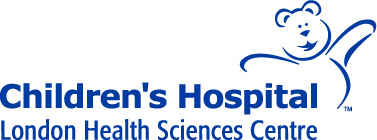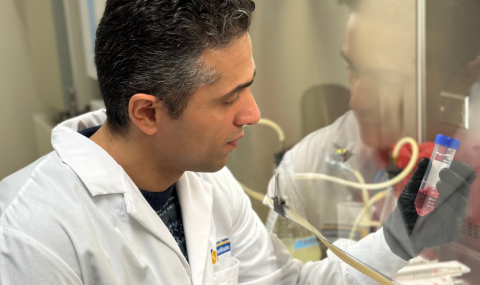What is Alagille Syndrome?
Alagille syndrome (ALGS) is a rare genetic disorder that affects the liver’s ability to properly drain bile, leading to bile build-up in the liver and potential liver damage. This condition also affects other organs, such as the heart, kidneys, eyes, bones and blood vessels.
ALGS can vary greatly in its severity, and while there is no cure, treatment options have greatly improved, helping those with the condition live longer and more comfortable lives.
What causes Alagille Syndrome?
ALGS is caused by a mutation in the JAG1 gene (found in 95% of cases), or in a small number of cases, the NOTCH2 gene. These mutations may either be inherited from a parent or arise spontaneously in a child (50% of cases). If one parent has ALGS, there is a 50% chance of passing the condition on to their child.
What are the symptoms of Alagille Syndrome?
- Jaundice (yellowing of the skin and eyes)
- Itchy skin (pruritus)
- Pale stools (light-colored poop)
- Dark urine
- Delayed growth
- Yellow fatty bumps (xanthomas)
- Heart murmur
- Changes in blood vessel shape
- Spinal changes
- White ring in the eye (posterior embryotoxon)
- Distinct facial features:
- Prominent forehead
- Deep-set eyes
- Pointed chin
- Bulbous nose tip
How is Alagille Syndrome diagnosed?
Diagnosis often involves a multidisciplinary approach, where specialists from hepatology, genetics, cardiology, ophthalmology and other areas work together to provide a comprehensive assessment and care plan.
Potential diagnostic measures include:
- Genetic testing
- Family history review
- Liver biopsy (may show fewer bile ducts than normal)
- Heart and blood vessel tests
- Eye exams
- Abdominal ultrasound
- Kidney function tests
- Spinal X-rays
How is Alagille Syndrome treated?
Medications
The most common medication prescribed for ALGS is ursodeoxycholic acid (UDCA), which helps improve bile flow and reduce symptoms like itching. For itchiness, rifampin, cholestyramine and antihistamines may also be used. Patients are often given vitamin A, D, E and K supplements due to bile flow issues that affect nutrient absorption.
Surgical interventions
If medications aren’t enough, a biliary diversion procedure may be performed to redirect bile flow and relieve jaundice. In severe cases, a liver transplant may be needed if the liver is failing, replacing the damaged liver with a donor liver.
What happens next?
- Regular monitoring of liver health, heart function and growth through check-ups and diagnostic tests.
- Early intervention is crucial to manage liver function and avoid complications.
- Dietary support and medications to improve digestion and nutrient absorption may be required.
- Surgical options may be necessary in severe cases, including liver transplant.
- Genetic counseling for families to understand inheritance patterns and risks for future children.
Can Alagille Syndrome be prevented?
As ALGS is caused by genetic mutations, there are currently no known ways to prevent the condition. However, if there is a family history of ALGS, genetic counseling and testing can help determine the likelihood of passing the condition to future children. Early consultation with a health-care provider can offer valuable insights and guide decisions for family planning.



